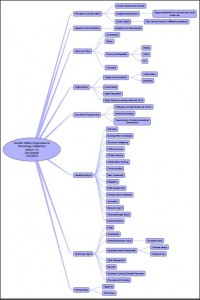A few weeks ago, during our stay interview at work, I was asked, “What legacy would you like to leave at UCSB?” This question resonated with me and prompted me to think about what I want my impact to be. I invite you to reflect on this question: What legacy do you envision leaving behind in your organization?
At the same time, I’m working with a team to implement a mentorship program for our IT professionals. One goal is to provide opportunities for future leaders. The question above and this mentorship program got me thinking about the most significant impact we can have in our organizations – the opportunities and interactions we share with the folks we work with and serve. How we treat them and set them up for success can affect their lives, even generations to come, and all the people they will interact with. As a wise colleague recently told me, at the end of the day, our work begins and ends with people. People will forget the systems we build and the projects we work on, but our impact on others lasts much longer. Sometimes, amid our busy work lives, we focus on what’s right before us and only think about the future within our time in our organizations. A wise student once told me, “As leaders, we are hard on ourselves, thinking our efforts don’t yield any meaningful results, but we are planting seeds today which will bloom beyond our time.” What seeds are you planting today that will contribute to the legacy you want to leave behind?
When asked about the legacy I’d like to leave, my immediate response was “Acts 13:36,” which I’ve come to translate as “he served God’s purpose in his generation.” This verse and my wife’s and I’s shared mission statement: “To make positive impacts globally through acts of compassion, inspiration, and education. In pursuit of this goal, practice an attitude of gratitude and an abundance mindset,” provides direction for our purpose in life. How do your values and beliefs shape the legacy you want to create?
As leaders and colleagues, we have a moral and ethical responsibility to ensure that those we work with and those we serve are treated with dignity and respect and given equal opportunities to succeed – not despite their differences but because of their uniqueness to our organization.
Through my experiences growing up, feeling marginalized in school and even at work when I didn’t fit the norms, I’ve come to value equal access to opportunities, inclusion, and appreciation for diversity. What values do you believe can contribute to a positive legacy? How can you invest in the people around you to help them reach their full potential?
With this in mind, our mentorship program aims to empower IT professionals and future leaders by focusing on their growth and development. By investing in people and fostering a sense of community, we can create a lasting legacy that carries on through those we’ve mentored and the people they’ll go on to mentor themselves.
Let us remember that our work and the legacy we leave in our organizations begin and end with people. People will forget the systems we build and our contributions to projects. However, our impact on others can resonate for generations to come. By focusing on developing meaningful relationships, mentoring future leaders, and living out our purpose with an attitude of gratitude and an abundance mindset, we can make an impactful difference in those around us and leave a legacy that will long outlive the systems we create. So, what legacy do you envision leaving behind?

